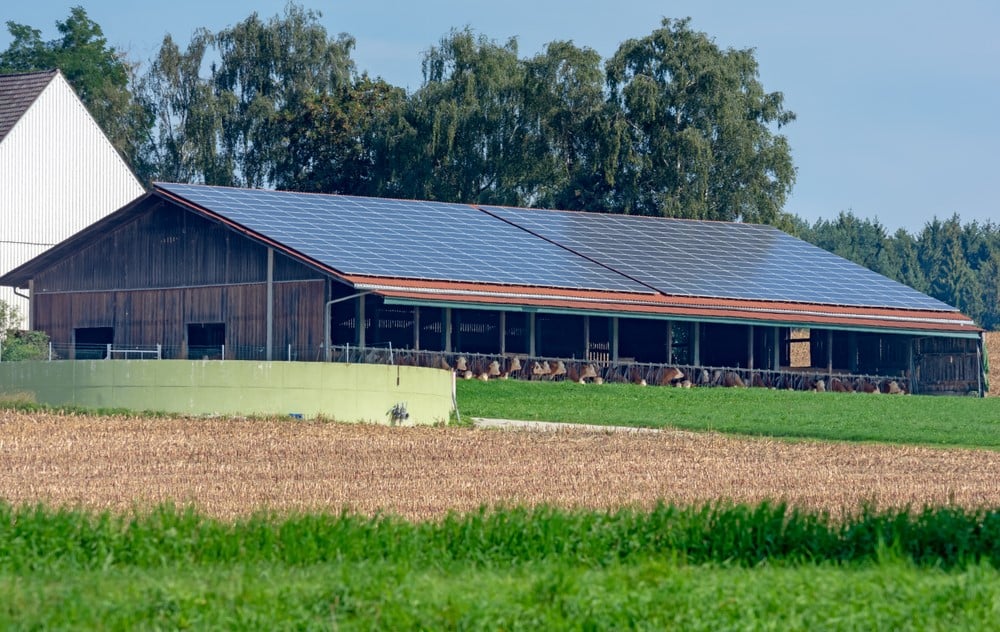Do you produce your own renewable energy and experience low payment for the energy you deliver to the grid? In this article you will see how you can turn the surplus energy into fertiliser, get more out of your resources and reduce emissions.
The basic concept for food production is to harvest solar energy, turning carbon dioxide, water and other nutrients into food. As the cost of renewable energy is rapidly decreasing, local electricity production is growing in the farming sector and self-consumption might ease the energy bill. However, the payment you receive for energy you cannot immediately use doesn’t bring you much of an income and possibilities for storing the energy become more interesting.
The N2 Unit from N2 Applied offers a solution where the farmer can improve the organic fertiliser that is produced by the farm's livestock and decrease the purchasing of chemical fertiliser. The treatment stops the loss of ammonia and increases the available nitrogen, enabling the farmer to gain more from the resources already on the farm.
The unit uses electricity to make the nitrogen in the air available for plant growth. You can utilise local electricity production or fluctuating energy prices, to get an upgrade of your slurry. In some way you can say it turns your slurry storage into a battery for local electricity storage – in this case as a nitrogen-enriched organic fertiliser that we call NEO.
The world consumption of nitrogen fertilisers is estimated to be around 110 million tonnes, and only in the UK, British farmers use more than 1,000,000 tonnes of nitrogen fertiliser each year. Buying fertilisers represents a significant cost for farmers but is important to achieve higher crop yields. Besides this cost, it also brings emissions from both its production and field application.
How does the technology work?
The N2 Applied unit treats the slurry continuously and is typically placed between the shed and the slurry storage. It uses electricity to activate the nitrogen in the air. This is done with plasma technology, which is best compared to what happens in the air when lightning strikes. This activated air is absorbed into slurry or digestate. This increases the nitrogen content and stops ammonia loss, so that the fertiliser can provide yield gain. It also reduces emissions and odour and thus significantly improves the farm’s environmental footprint.
The process requires electricity, and is designed to be a good match for the electricity systems of the future with greater local production from renewable sources, fluctuating power supply and pricing.
Locally produced electricity can be stored as fertiliser
Farmers have been investing in local electricity production over the last decade. As the payment for selling electricity to the grid can be low, it is time to explore new solutions for the use of surplus electricity. As long as the conditions are laid out in the right way, the power consumption and production capacity of the N2 unit can be adjusted depending on the electricity production and current power prices. The prices also tend to be low during night so the unit offers a way to turn this into an advantage and you may store the cheap energy as nitrogen in your slurry storage.
Farmers with their own local electricity production now have the opportunity to utilise the electricity locally to make fertiliser and reduce emissions. The first N2 units are now being installed and require about 50 kilowatts per hour to run at full capacity. The power consumption can be reduced/increased or can be started/stopped within seconds depending on variations in prices, supply and in combination with auxiliary electrical demand on the farm.
Less operating hours leads to less capacity, so what would be the right farm size? This is highly dependent on the local conditions both in terms of the type of slurry, nitrogen content and electricity options. Running at full capacity one 50 kilowatts unit can cater between 2,000 and 4,000 cubic meters of a standard slurry per year, and you can get solutions which fit different capacity needs. It is also possible to run multiple units in parallel, but you can of course start with one stream of “super-slurry” for your most nitrogen demanding fields and build up to scale at a later stage.
Balancing the grid – a large scale Power-to-Nitrogen solution
The need for more flexible energy systems is key to delivering a net zero economy. A higher share of variable production which will be subject to changing weather patterns, will challenge the balancing of the grid. As the energy systems are changing and the N2 units are being deployed, there will be opportunities to help local grid operators to balance the grid. Coupling multiple plasma units that pull 50 kilowatts each from the grid offers significant leverage as a pool of capacity that can be managed remotely. It’s possible to adjust these remotely and could be a good option to reduce the need for new grid investment and provide value for all parties involved.



